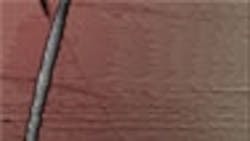Taking the NanoPulse -- A Picture is Worth a Million Nanos
For almost two years, I've used this column to help give you a clear mental image of what nanotechnology is and what it can do.
This month, we're going literal -- with the help of amazing images from NanoSurf, Inc., a maker of atomic force microscopes (www.nanosurf.com).
Believe me, it's more than pretty pictures. Once you take a closer look, it's easier to understand nanotechnology and imagine how to put it to work.
So, do you get the picture? When you look closely, it's easier to understand the need for nanotechnology - and the solutions it can provide. Want to see more? Nanosurf has a fascinating image gallery at www.nanosurf.com. It includes images of Martian dust particles taken by a NanoSurf AFM aboard NASA's Phoenix Mars Rover. And come back next month when we'll do more visioning about nano-izing your company and products.
Scott E. Rickert is chief executive of Nanofilm, Ltd, located in Valley View, Ohio.
About the Author
Scott E. Rickert
Chief Executive Officer
Nanofilm Ltd., a privately held company with headquarters in Valley View, Ohio, near Cleveland, leverages its rich technological strengths and core competencies to capture growth opportunities in nanotechnology applications. Its portfolio includes optically clear, thin (nanometers to microns) coatings, self-assembling nano-layers, nanocomposites and surfactant products.
